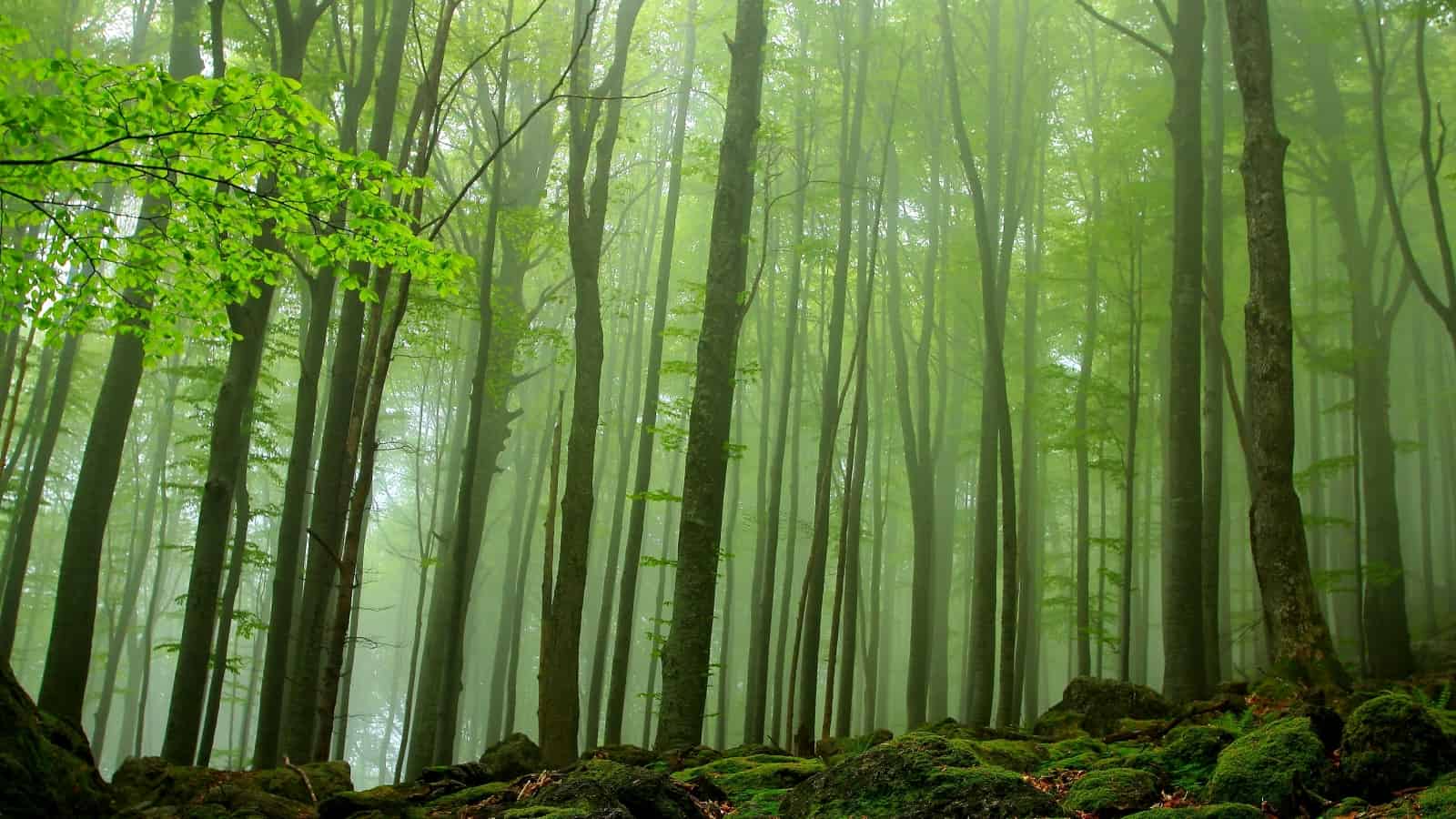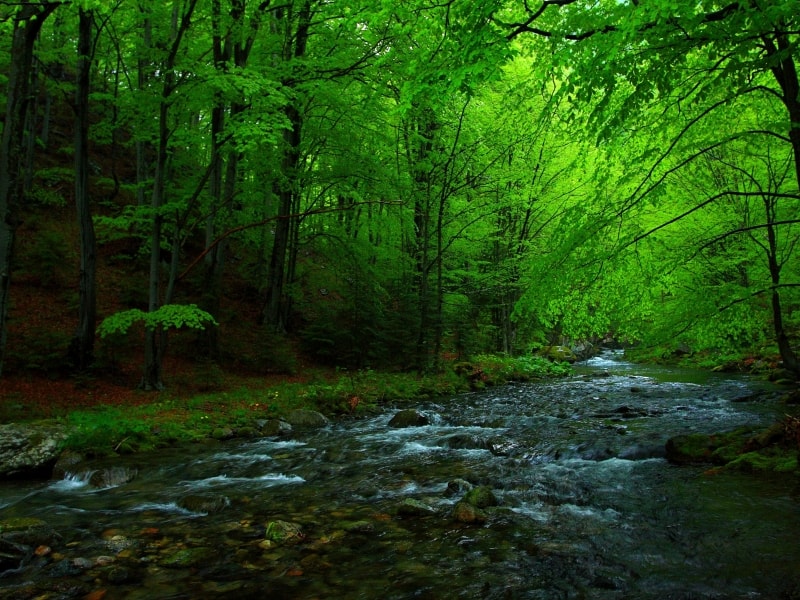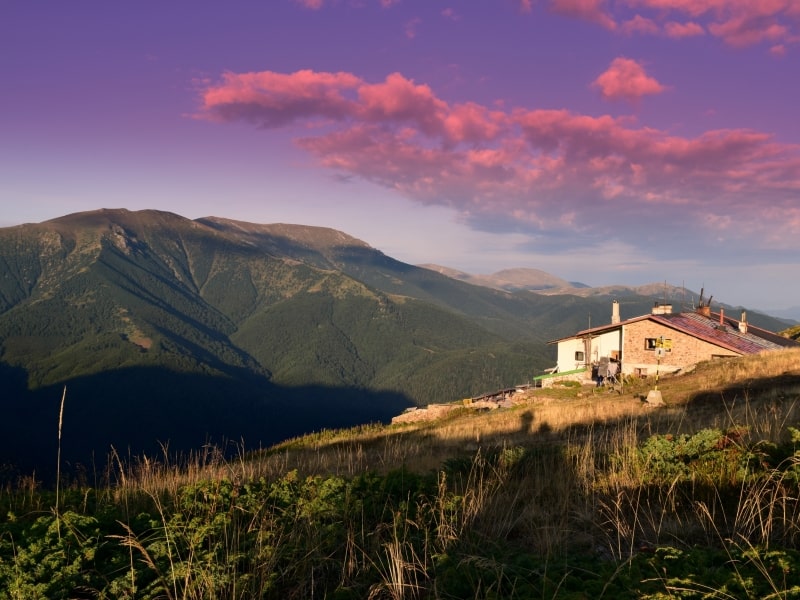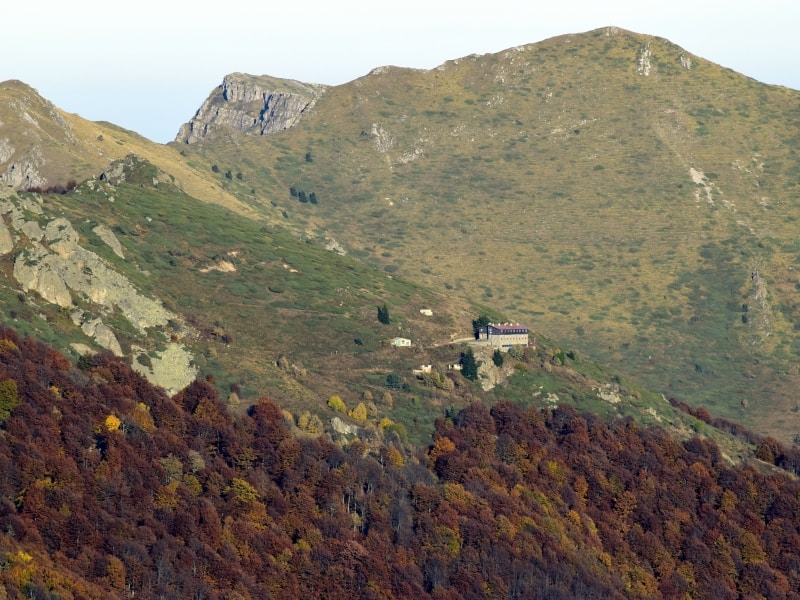Rare and endangered wildlife species and great biological diversity
With an area of 72021 ha (720 sq. km) Central Balkan National Park (CBNP) is the second largest national park in Bulgaria and one of the largest European protected areas.
Discover rare and endangered wildlife species and communities, self-regulating ecosystems with great biological diversity, as well as historical sites of global cultural and scientific significance.
Since 1991 the park conserves the unique natural scenery and heritage of this area and protects the customs and livelihood of the local population. Central Balkan was designed around nine existing strict nature reserves of prime conservation importance which were declared during the communist time.

photo: Sergey Aleksandrov
CBNP is located in the central part of Bulgaria, in the most central and higher portions of the Balkan Mountain Range. This is the chief range of the Balkan Peninsula and Bulgaria and an extension of the Alpine-Carpathian folds. The altitude ranges from 500 to 2,376 m. Botev peak is the highest peak in the park and in the Balkan Range.

Central Balkan Biosphere Reserve
The CBNP is an important part of the National Ecological Network and is a protected area under the Birds and Habitats Directives within the European NATURA 2000 network. Since the establishment of the park there is no intensive use of natural resources and no uses of forest at all. On inaccessible places, as in the reserves, there were no uses of forest even in the past.

In 2009 the Council of Europe awarded CBNP with a European Diploma for protected areas. In 2017 the most representative beech forests from the nine reserves in the park became part of the extended serial World Heritage Property “Ancient and Primeval Beech Forest of Carpathians and Other Regions of Europe”.
Since 2017 the nine reserves in the park are the core zone and the remaining part of the Central Balkan is the buffer zone of the newly established Central Balkan Biosphere Reserve.
Old beech forests

Four of the important Bulgarian rivers start here – Tundzha, Vit, Osam and Stryama.
Centennial forests (including the largest protected beech forests in Europe) provide fresh air. More than 61 % of the park area is covered with forests. CBNP is the biggest well protected old beech forest massif in Bulgaria. Beech occupies 71 % of the forests in the national park.
Almost all forests in the park are of natural origin. Most of them have not been affected by human activity in the last century. The average age of the beech communities in CBNP is 135 years.
A majority of the forests in the park are composed of broadleaf species – European common beech, common hornbeam, durmast oak, maple species and others.
The coniferous forests are mainly Norway spruce and Macedonian pine and the mixed forests consist mainly of beech and silver fir.

Precious natural sites and a wealth of animal and plant species
The high mountain treeless zones have been created by centuries of traditional grazing.
Here one can find more that the half of the plant species of Bulgaria, close to two thirds of its medicinal herbs, and 11 plant species that can only be found here, and nowhere else in the world.

The park provides a shelter for the great symbols of Bulgarian nature – wolf, bear, chamois, red deer, and golden eagle.

Inaccessible rock massifs, canyons and gorges, waterfalls and steep abysses are among its most precious natural sites.

Hiking tourism
Interaction with nature without harming
The protected area offers opportunity for recreation and spiritual enrichment. More than 570 km of tourist routes have been developed for the convenience of visitors. Walking and hiking tourism is encouraged here.

For the lovers of wild nature, extreme sports, horse-back riding and mountain biking there are special routes as well as routes for observation of plants and animals, cultural-heritage tourism and photo-hunting tourism.
In addition, there are special areas for camping, setting of fires, resting and observation. Special ecotrails, interpretative routes and open air classrooms help gain visitors more knowledge about nature in a natural and exciting way.

The most favourable period for visiting the park is from May to November.
Accommodation is not a problem. On the territory of Central Balkan, there are 25 chalets and shelters which provide basic conditions to stay. Therefore it is easy to plan a wide variety of walking tours, lasting more than a day.

Around the park, there are numerous possibilities to stay at family hotels and guesthouses, where the tourists can feel traditional revival atmosphere, meet local culture and history and taste delicious local meals.

Other sightseeing
The Troyan Monastery
The Troyan Monastery is the third largest and one of the most celebrated Christian monuments in Bulgaria.
The monastery is situated 10 km southeast of Troyan and was founded probably around 1600. In the first half of 18th century a monastery school was opened that became very popular through the years. At the same time the abbot Hristophor built a wood church.
Later, in its place, a new and bigger church made of square stone blocks and bricks was built. In the same style was made the cornice of the dome. The frescoes in the church were painted by Zahary Zograf in 1847-1848.
In the beginning of the 19th century the monastery was already very big. Тhe two-storey, even three-storey residential buildings which surround the yard, were very unusual for this century.
Along with the marvelous frescoes in the Troyan Monastery there are precious works of the applied arts and crafts. Among them the silver cover of the Gospel, a magnificent chalice, a silver ossuary with gold ornaments and precious stones deserve special attention. The monastery is famous for its miraculous icon the Virgin Mary, the Three-handed.
It was a famous literary centre and contributed to the publishing of many books during the Bulgarian Revival period.
The Memorial “Birth of Christ”

The Memorial “Birth of Christ” was built near the town of Shipka.
It is devoted to those Russian soldiers and volunteers who lost their lives in the battle for Bulgarian freedom.
The gilt of the domes and the multi-colored decoration of the church façade with the backdrop of the mountain attracts people’s attention.
The Kazanlak tomb
The Kazanlak tomb was excavated in 1944 and is one of the 9 cultural and historical sites in Bulgaria included in the UNESCO list of historical and architectural monuments of global importance.
It is located in the northern part of the town of Kazanlak. It is also the only monument completely preserved from the Early Hellenistic Period (4th – 3rd centry B.C.). Indeed, it is a masterpiece of the Thracian architecture and painting.

It consists of a lobby, a corridor and a dome. The system of ornaments in the corridor is complex and extremely interesting. The walls are covered with shining, fine plaster and a beautiful fresco. Scenes of war are shown a central theme, on both sides of which one may see two warriors with their battle attire and weapons.
The focal point is the main composition, which describes feast as a foreground to the military and political activities of the deceased. It is there that one may see a married couple of obvious eminence, painted with great skill and care. Numerous figures of wildly galloping horses and battle carts add to the depth of the scene.
Shipka peak – the symbol of liberty, the symbol of a future prospering Bulgaria
The Monument of Liberty rises atop Shipka peak. It was built with the donations of the Bulgarian people and was designed by Atanas Donkov and by the sculptor Alexandar Andreev.
The National Park was officially opened in 1934. A stairway of 894 steps leads to the 31.5 m high monument.
Over its main entrance you can see the proud figure of a bronze lion – the symbol of the Bulgarian state. The other three sides of the entrance bear the inscribed names of Shipka, Sheinovo and Stara Zagora – the battle fields. On the ground floor of the monument the bones of the heroes who lost their lives in the battle for the pass are kept in a marble sarcophagus.
The exhibition on the other seven floors illustrates the heroism of the Russian soldiers and the Bulgarian volunteers that took part in the five months long defence of Shipka. The collection comprises medals and orders, pictures, documents and arms.
There is a great panoramic view from the last platform, which reveals not only the restored details of the battle, but also the monuments and the common graves. They keep the memory of the sacrifice of the heroes. More info: www.shipkamuseum.org/en/
To the east of Shipka peak rises up another historical peak named Buzludja. At its the foot the hero leader Hadji Dimitar died. On 30th June 1868 he fought with his small detachment against numerous enemies. In memory of this heroism a monument was erected in 1961 – the monument of Hadji Dimitar. The imposing figure of the hero is made of white stone from the Vratsa region.
“Via Trayana” Roman road
Two thousand years ago the Roman legions still traveled over this land. The old Roman road, also called Trayan’s road after the Roman Emperor Trayan who was famous for his vigorous building activities, is still in excellent condition even today and according to specialists it has the best ever preserved Roman stone pavement within the boundaries of Bulgaria.
Everyone who walks along that road will find an excellently preserved authentic high road, which at some points reaches 6 m in width and has an axis line, curbs and Thracian sanctuaries.
In fact this road is even more ancient since it was first constructed by the Thracians in the beginning of the first millennium BC and in 61 AD, according to well preserved written evidence, it was transformed into a model road, serving the military and trade traffic of the Roman Empire, from the Danube River to Philipopolis (today’s Plovdiv).
This unique tourist attraction – a wonderful “prelude” to the highest (1,320 m above sea level) and – should we say – the most beautiful Stara planina pass Beklemeto (Troyanski pass) – acquires even greater popularity and is to be transformed into a tourist attraction for the guests in the region.
The Roman road “Via Trayana” offers a rare opportunity to start at the foot of the mountain and follow the fascinating road with its natural magnificence and historical and ancient visions to reach the mountain ridge.
The “Damascena” Complex
The “Damascena” Complex is located at the foot of the Stara Planina Mountain, in the very heart of the Rose Valley, just outside the village of Skobelevo, some 4 km north of the main Sofia-Bourgas road.
The complex offers an exceptionally beautiful view of the Sredna Gora Mountain. Its immediate proximity to the balneology town of Pavel Banya gives the visitors in the area a unique opportunity to combine balneotherapy with learning more about the process of rose-oil distillation, which is so characteristic of this region.

Special events
The Central Balkan National Park is situated in the centre of the country – a region with a rich historical past, with preserved revival traditions and customs. In each of the municipalities around the park there are annual traditional festivals and events related to the typical way of life and traditions of the local people.
Such events include the roses celebrations in the towns of Karlovo, Pavel Banya and Kazanlak, the masquerade mumbles in Pavel Banya, the celebrations of the plum and the plum brandy in Troyan, the feast of the pork bacon and hot brandy in Apriltsi, the feast of the pumpkin in Sevlievo and many others.
On the 6th of January in Kalofer
On Epiphany the banks of the Tundja River are overcrowded with people. The church bells ring in the early morning. The priests who have celebrated the festive liturgy accompanied by their parishioners begin a festive procession from all churches in Kalofer. They all meet at “Cherkovnia most” (church bridge). This is where Tundja River will be sanctified.
A priest throws a cross into the river and then the miracle begins – the river starts “boiling” with people. Prettily dressed residents from 10 to 50 years of age jump into the ice cold waters of the river and try to catch the cross.
Tradition requires that the youngest of them all should pass the cross to the priest. The observers shed tears, thrilled by the solemn religious ritual. Spontaneously part of them wade into the river. There are thousands of them – happy, smiling, cold, but eager to fulfill the undying tradition. This shows how strong the Bulgarian spirit and traditions are!
The Troyan plum brandy
The most famous delicacy in Troyan is the Troyan plum brandy. You can find on the market several kinds of brandy, made by “Vinprom-Troyan” – ordinary, seasoned, and old that you can taste in every restaurant.
The variety at home is greater. Traditionally when a child was born, the Troyan people would bottle plum brandy, which is opened at an engagement, wedding or other festive events.
A special plum brandy, spiced with mountain herbs is made in the Troyan monastery. By old custom during the winter months the brandy is drunk heated and sweetened.
A great attraction for the guests of the Troyan municipality is the Festival of Plums and Plum Brandy which takes place in the last Saturday of September. Brandy is distilled out in the open, with tasting and competitions for the best home-made liquor. The winners receive special certificates and unique medals in the shape of a plum.

For more info also see visitcentralbalkan.net
Text: Directorate of Central Balkan National Park | Photos: Directorate of Central Balkan National Park/Stoyan Hristov









